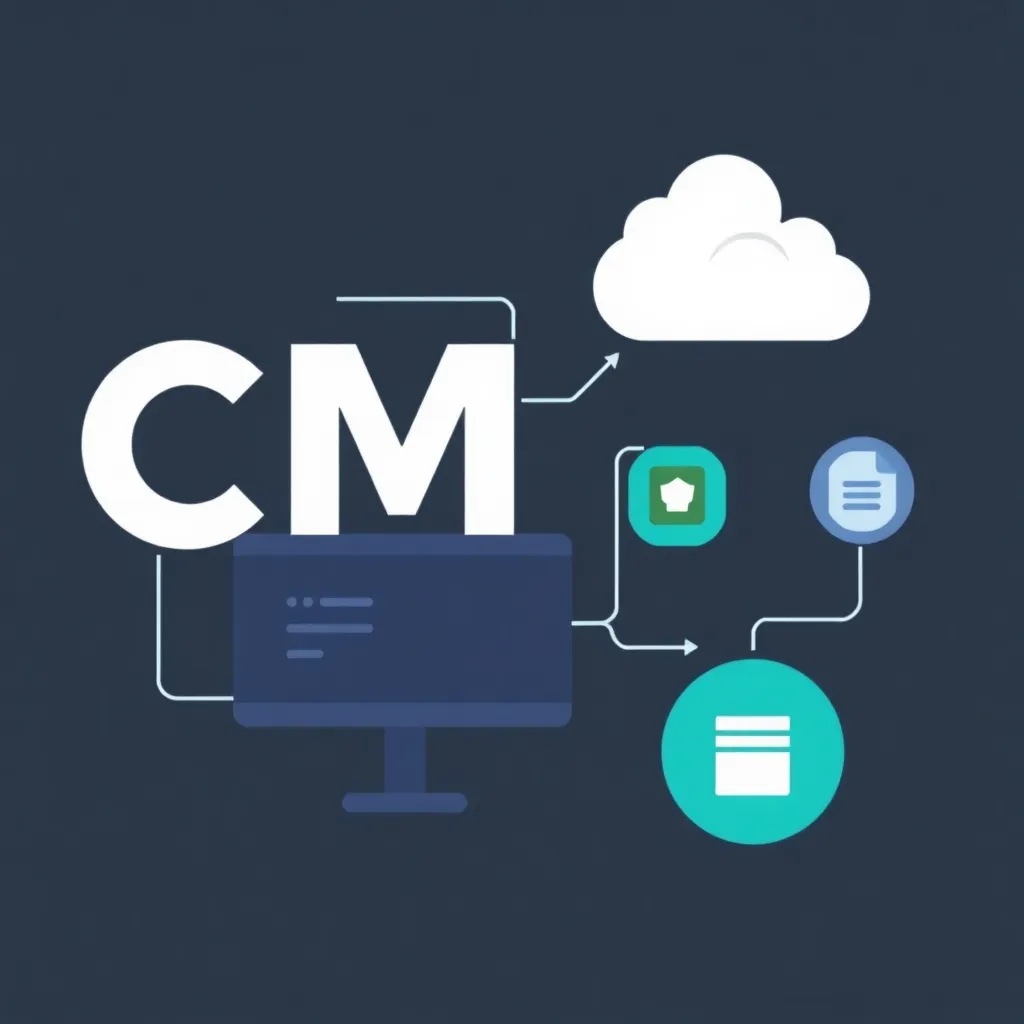Inexpensive web hosting can be a sensible solution for running a professional website on a low budget. But one thing is clear - a low price must not be at the expense of performance, security or support. It is therefore crucial to pay attention to certain technical and contractual details when choosing a low-cost provider.
Key points
- Reliability over 99.9 % uptime is mandatory
- Performance secure through SSD and modern infrastructure
- customer support should be accessible and competent
- Security Check with SSL, backups and malware protection
- Hidden costs and avoid restrictions

What affordable web hosting must deliver
Many people immediately think of considerable restrictions when they think of cheap hosting tariffs. However, modern providers often offer a surprising number of features at low prices. Solid projects can also be implemented with a tariff of less than 5 euros per month - as long as a few things are right.
A good affordable web hosting should offer at least the following: sufficient storage space for the project size, a Let's Encrypt SSL certificate, MySQL databases and a clear control panel. If a one-click installer for WordPress is also available, you will save a lot of time during setup.
However, don't set your expectations too high in terms of performance - cheap offers usually have limited CPU and RAM capacities. However, this is often perfectly adequate for simple websites or blogs.
It is also helpful to consider in advance how many email accounts you need. Some low-cost tariffs only provide a few mail accounts or limit the size of the mailbox. If you don't have a large requirement, you can still live with this. However, if you plan to have several addresses, you should give preference to tariffs that allow you to add individual e-mail accounts without incurring excessive costs.
In addition to the pure performance features, it also depends on how the hosting is administered. Some hosters rely on Plesk or cPanel, others on proprietary solutions. In any case, the backend should be easy to understand for basic adjustments and allow beginners to make simple settings without extensive Linux or server knowledge.
Uptime and performance guarantee is mandatory
A website outage costs trust and visibility. Web hosting providers must therefore ensure the highest possible Availability ensure - reputable hosters guarantee 99.9 % uptime or more. This corresponds to around 43 minutes of downtime per month.
Performance is just as important. Check whether the servers are based on SSD and whether content delivery networks (CDNs) can be integrated. These ensure fast loading times for supra-regional visitors.
Another factor is the internal server load. With shared hosting-tariffs, you share server resources with other customers. Therefore, make sure you provide meaningful information about the server architecture: How much RAM is available to you per process, what CPU performance is guaranteed? Our tip: Critically scrutinize the term "unlimited resources". This often conceals throttling that takes effect with high visitor numbers without this being directly apparent.
It also makes sense to check whether the host offers functions for caching or optimized configurations for popular web applications (e.g. for WordPress). Such performance optimizations can bring a great deal, especially with inexpensive web hosting, without you having to intervene deeply in the server settings yourself.

Recognize and evaluate support quality
Difficulties in particular show how helpful a web host really is. Round-the-clock support via chat or e-mail is no longer an exception - but still pay attention to Testimonials on service quality. If you need help quickly, you should not be put off with a response time of 48 hours.
Actively test customer support before signing a contract - ask specific questions. This will help you recognize whether you are getting genuine expertise or just generic texts.
If you are unsure whether free hosting would be an alternative, the following article will help: Free web hosting in comparison.
When evaluating support, it is also worth taking a look at user communities, forums and social media groups. Users usually share both positive and negative experiences very openly there. It is also helpful to consider the language in which support is offered. If you prefer German support, for example, you should definitely make sure that the support not only has a German-language interface, but also trained employees who can answer in German and solve complex questions competently.
Avoid hidden costs
Many providers advertise very low entry-level prices. However, these prices often increase considerably after the first year of the contract - sometimes by 300 % or more. Read the small print carefully and check whether the advertised prices sustainable are.
Additional functions such as backups, mail accounts or SSL certificates are also not always included in the basic tariff. Make a list of the functions you need in advance and check whether they are included at no extra charge.
Especially with Promotional prices you should be particularly vigilant. These are often only valid for the first contract term and then increase dramatically. So consider whether or not you are prepared to pay the higher subsequent tariff later on. Sometimes a slightly higher-priced tariff can be the better offer right from the start because the costs remain stable and are cheaper in the long term. Therefore, always compare the effective price per month in the long term.
Also pay attention to whether and when fees are incurred for domain renewal. Some tariffs entice you with a free domain in the first year, but charge hefty surcharges in the second year or for additional domains. A transparent overview of the follow-up costs should be indispensable. This will help you avoid unpleasant surprises.

Security despite low price
A cheap web hosting solution must not be Compromises in security to enter. SSL encryption is now standard - look out for free Let's Encrypt integration. Regular backups, DDoS protection and protection against malware are also useful security components.
Some providers even offer daily backups - with others, this can only be done manually or via plugins. Check whether you can also trigger manual backups on request and in which format they are provided.
Banking data, personal information or confidential company content must not be compromised under any circumstances. If you run a professional website, you need reliable security functions in order to maintain the trust of your users in the long term. A good monitoring system can also be useful: Some hosters provide proactive information about possible security gaps, update options or unusual traffic behavior. This service is a real added value, especially for beginners.
GDPR and server location
Particularly important aspects of low-cost hosting solutions are Data protection compliance and the location of the servers. To be on the safe side legally, you should choose a provider that operates servers in the EU. This will ensure that personal data is processed in accordance with the GDPR.
The provider should provide a clear privacy policy and, if necessary, offer a data processing agreement that you can conclude with them as part of the order processing.
Those targeting users in Germany, for example, generally benefit from a server location within the Federal Republic or at least in the EU. This not only means faster response times, but also avoids legal uncertainties. It is worth asking specifically in which data centers the data is hosted and whether the technical operators are also GDPR-compliant. If necessary, make sure that no data flows to unsafe third countries, provided you communicate this in your privacy policy.

Scalability: More flexibility for growing projects
Whether it's a blog, portfolio or store - a web project often develops dynamically. It is therefore important that the hosting package can be flexibly customize allows. Pay attention to whether storage space, databases or performance packages can be expanded later - if possible without relocation or downtime.
Some providers offer automatic package upgrades as soon as certain limits are exceeded. With others, you have to upgrade manually - which requires additional planning.
In the long term, it is crucial that you are not suddenly faced with technical hurdles when traffic increases. If your project is growing thanks to good content and marketing measures, the package and server performance should be able to keep pace. Find out in advance what form an upgrade will take: Do you have to move your site, or will everything be automatically transferred to the new hardware? Many hosters allow seamless upgrades so that your site is still accessible during the upgrade.
In order to ensure a certain degree of future security, you can also Managed VPS- or Cloud Hosting-options offered by the same provider. If in doubt, you can stay directly with the provider in the event of major growth and continue to benefit from the familiar support and operating concept.
Technologies and ease of use
A modern hosting environment should be based on the latest versions of PHP, MySQL and Node.js if necessary. This is the only way to use many current CMS or store systems without any problems. If you want to use WordPress, for example, a 1-click installer be integrated.
Equally important: the administration of your website. Tools such as cPanel, Plesk or hpanel enable simple configurations and do not require detailed server knowledge - ideal for beginners. Detailed information on how they work can also be found in the article Web hosting basics.
A clear and structured user interface is essential, especially for users who regularly update the website or install plugins. An intuitive dashboard can greatly simplify your work, especially if you need to change settings quickly in the event of a problem. A current PHP version should also be available at all times in order to meet security standards and ensure compatibility with common CMSs.
Also check whether the host offers an optional staging environment for WordPress or other systems. This allows you to test new functions, designs or plugin updates on a separate test environment without affecting the live site. Although this is not a must for every project, it can prevent headaches later on.

Resource limitation: Where are the limits?
Low-cost providers often save on server resources - this has a direct impact on your website performance. Check the Resource limits per account or domain: RAM, CPU utilization or simultaneous database connections. If you calculate too tightly here, you will quickly experience loading problems or blocks.
With shared hosting in particular, you share the server with many others. If too many resources are used by one of these customers, this can affect your own site.
Also critical are so-called Inode limitsi.e. the maximum number of files you are allowed to store on the server. This limit can be reached quickly, especially for larger websites with many media files or a corresponding volume of emails. You should also question the extent to which the Fair use regulations take effect. Some hosters have contractual assurances that throttling or blocking may occur in the event of "disproportionately high usage".
Anyone planning for the long term and running larger, data-intensive projects should ensure that there are options to extend these limits. A good indication is a transparent presentation of the values in the product sheet. If there are no specific details on resource allocation in the tariff, there could be nasty surprises as soon as your project becomes successful or requires more storage space.
Functions in comparison: What low-cost providers deliver
The following table shows which services are typically included in low-cost web hosting offers:
| Function | Frequently included | Possible additional costs |
|---|---|---|
| Domains | 1-2 inclusive domains | from 8 €/year per domain |
| Storage space | at least 5-10 GB SSD | Upgrade for large projects |
| SSL Certificate | free of charge (Let's Encrypt) | partly chargeable variants |
| Backups | partially included | Daily automatic backups often subject to a charge |
| 2-10 accounts | Extended mailboxes with surcharge |
However, if you need additional features such as cronjobs, SSH access or Git integration alongside these typical functions, you should take a closer look. Not every affordable plan includes developer functions that are helpful for advanced projects. Especially if you are planning automated processes (e.g. regular updates, maintenance scripts), cronjobs or SSH are a must. Pay attention to how many cron jobs you are allowed to set up or whether these can be executed automatically after a short cycle.
Implementing several projects - is that possible?
Do you run several blogs or landing pages? Then check the option, multiple domains in a single hosting package. Some providers allow this by default, others charge extra or additional tariffs.
This is an important criterion, especially for agencies, freelancers and marketers. A little tip: It pays to compare - as described in the article What can web hosting cost? is treated.
If you use several domains within the same account, it is worth making sure that the projects are separated. Some hostings offer Addon domains but manage all websites under the same file directory. This can be problematic for security if a site is hacked. It often makes more sense to run each domain in its own directory so that a security incident does not affect all projects. You should therefore check whether the host offers corresponding options and whether sufficient databases are available (e.g. a separate database for WordPress for each domain).
You should also pay attention to the e-mail functions when managing multiple domains. It is often possible to set up specific e-mail inboxes for each domain, which in turn place a burden on the tariff quota. Careful planning can help here so that you don't run up against limits unnoticed. Especially if you need e-mail addresses for several domains, you should think about forwarding or external e-mail providers.

Summary: Quality is not the same as price
Inexpensive web hosting can be a smart choice - provided you know what's important. The balance between price, stability, security and support is crucial. If you take a close look here, you will save money and frustration in the long term. Pay particular attention to contract terms, any upgrade costs and performance promises.
Clear recommendation: Don't just look at the price. Pay attention to the technical framework conditions, contract details and possible additional costs. This allows you to create a stable and efficient online presence even with a small budget.


